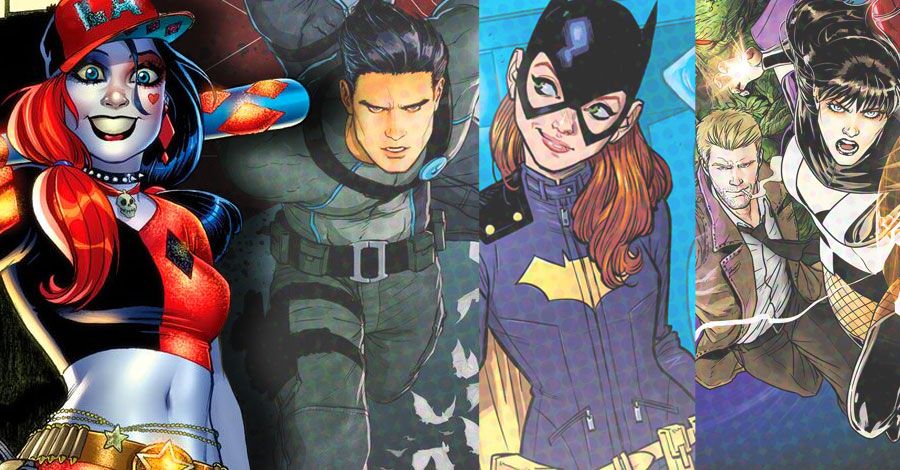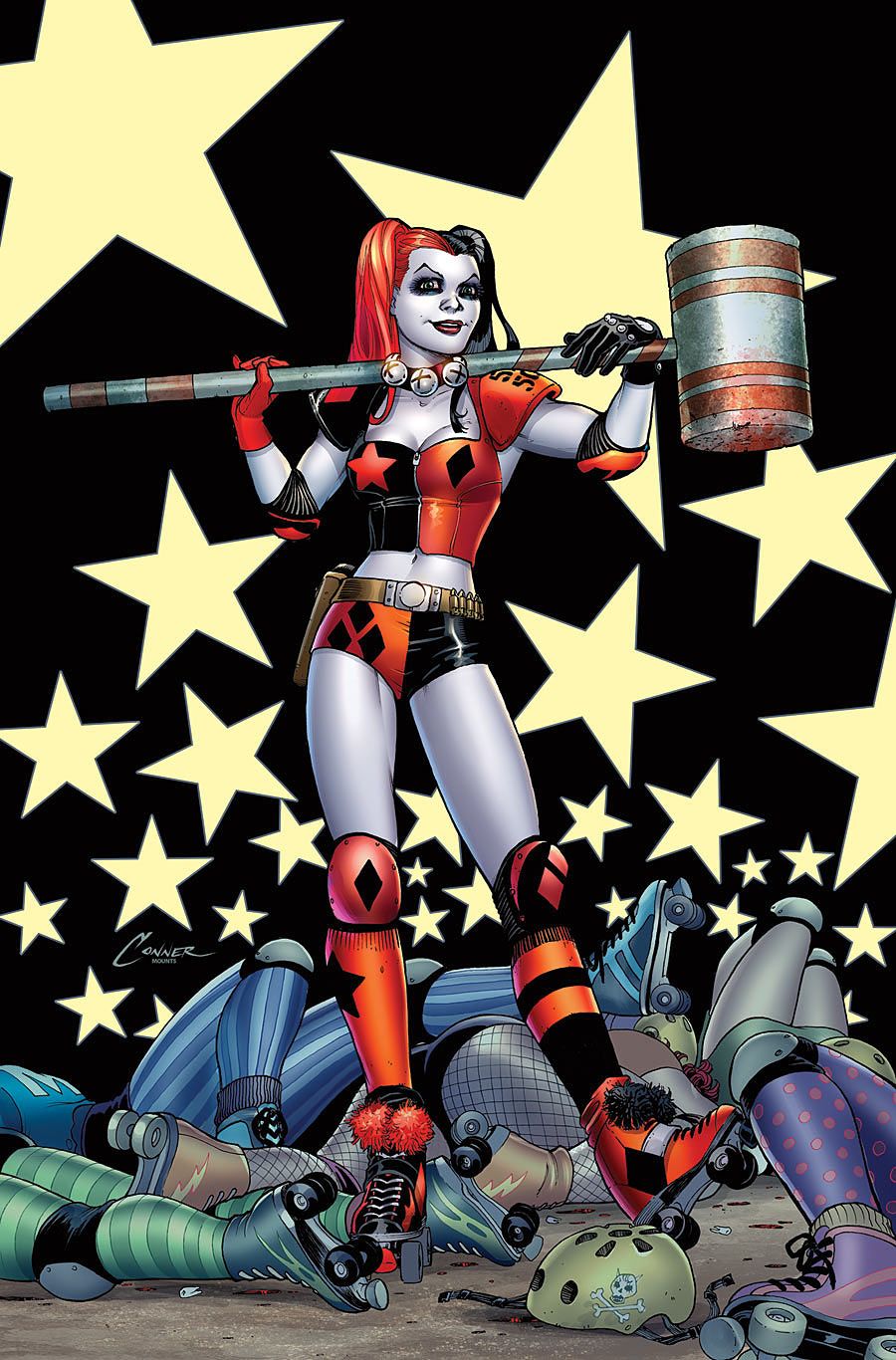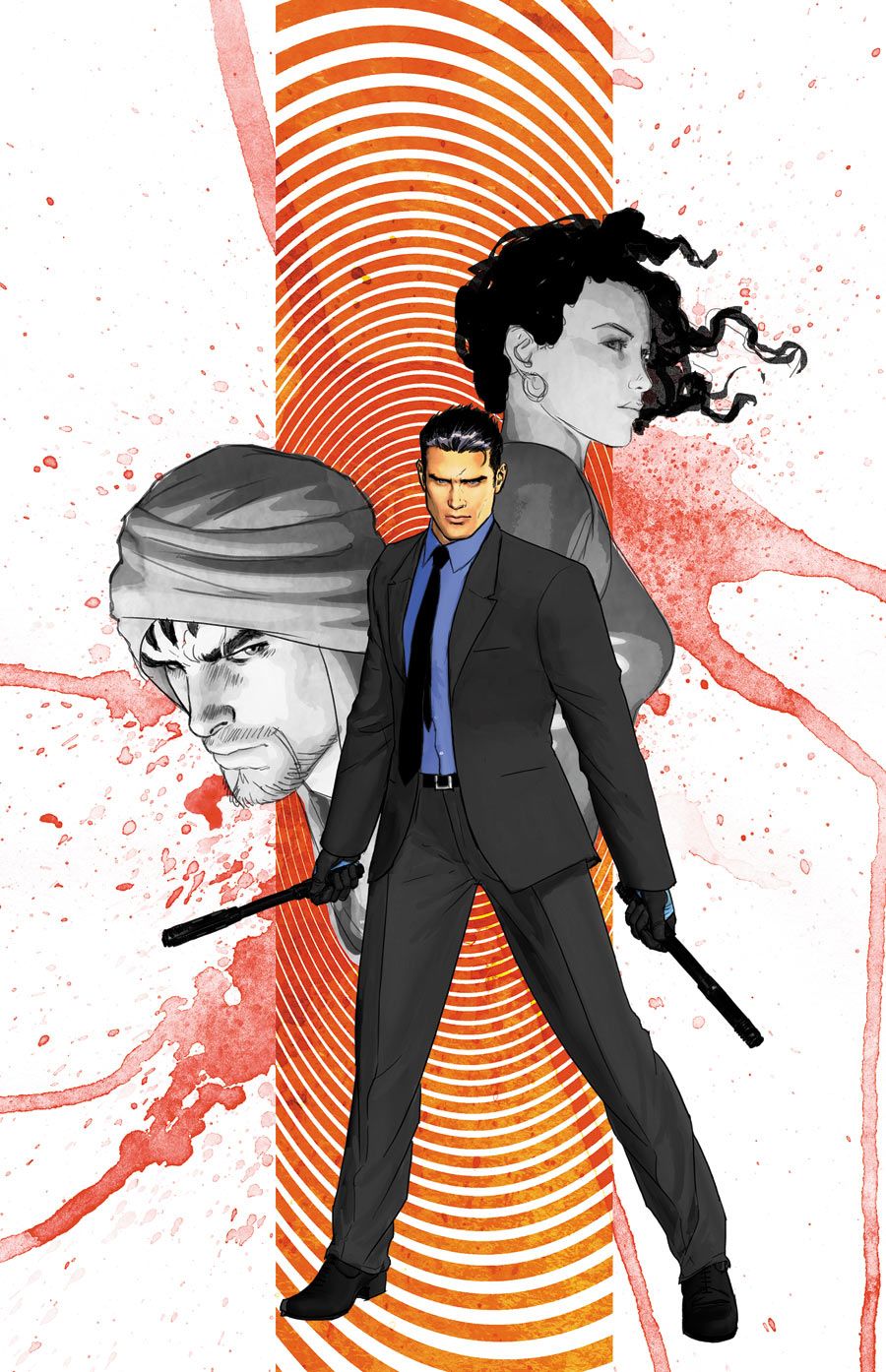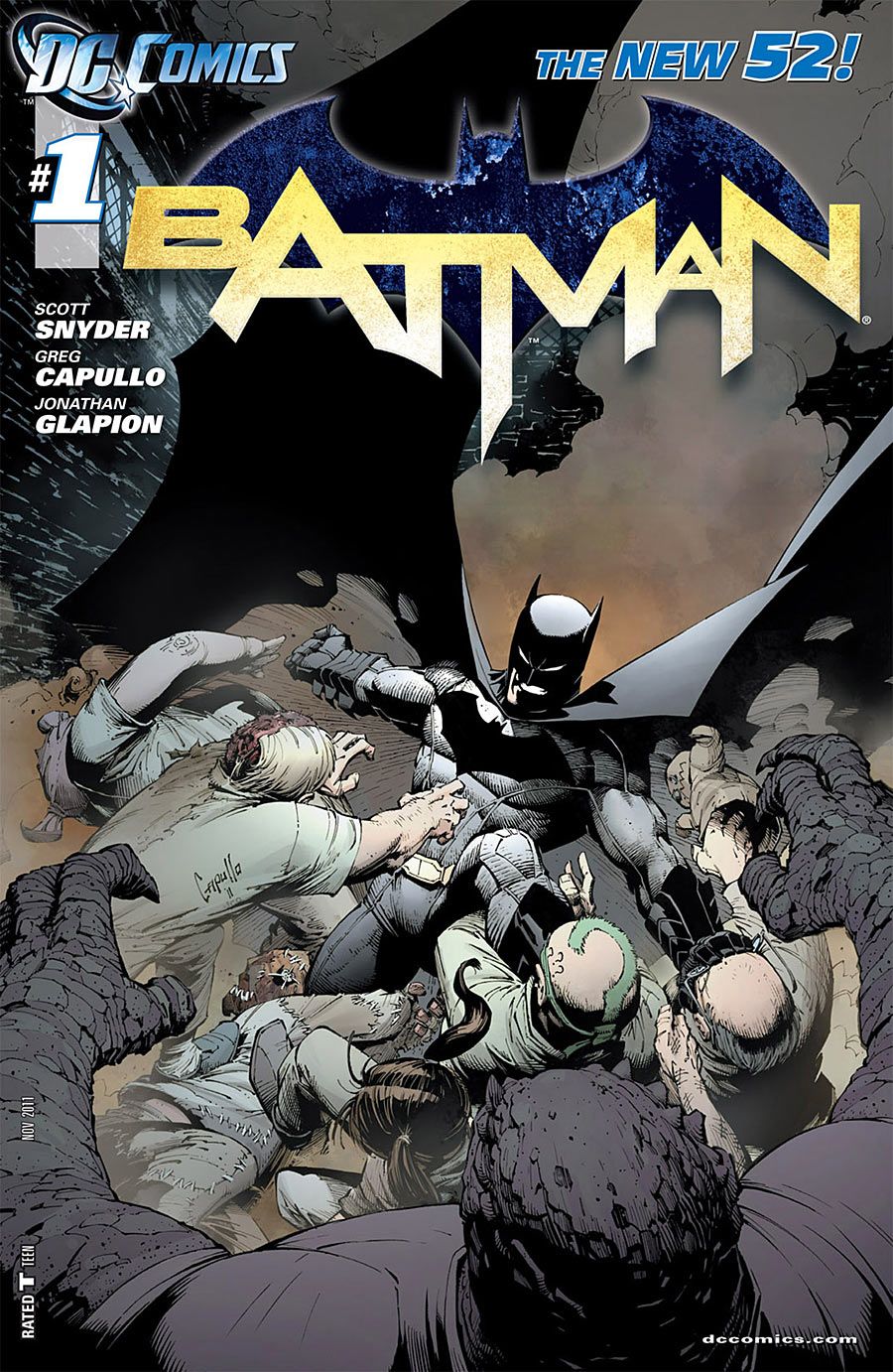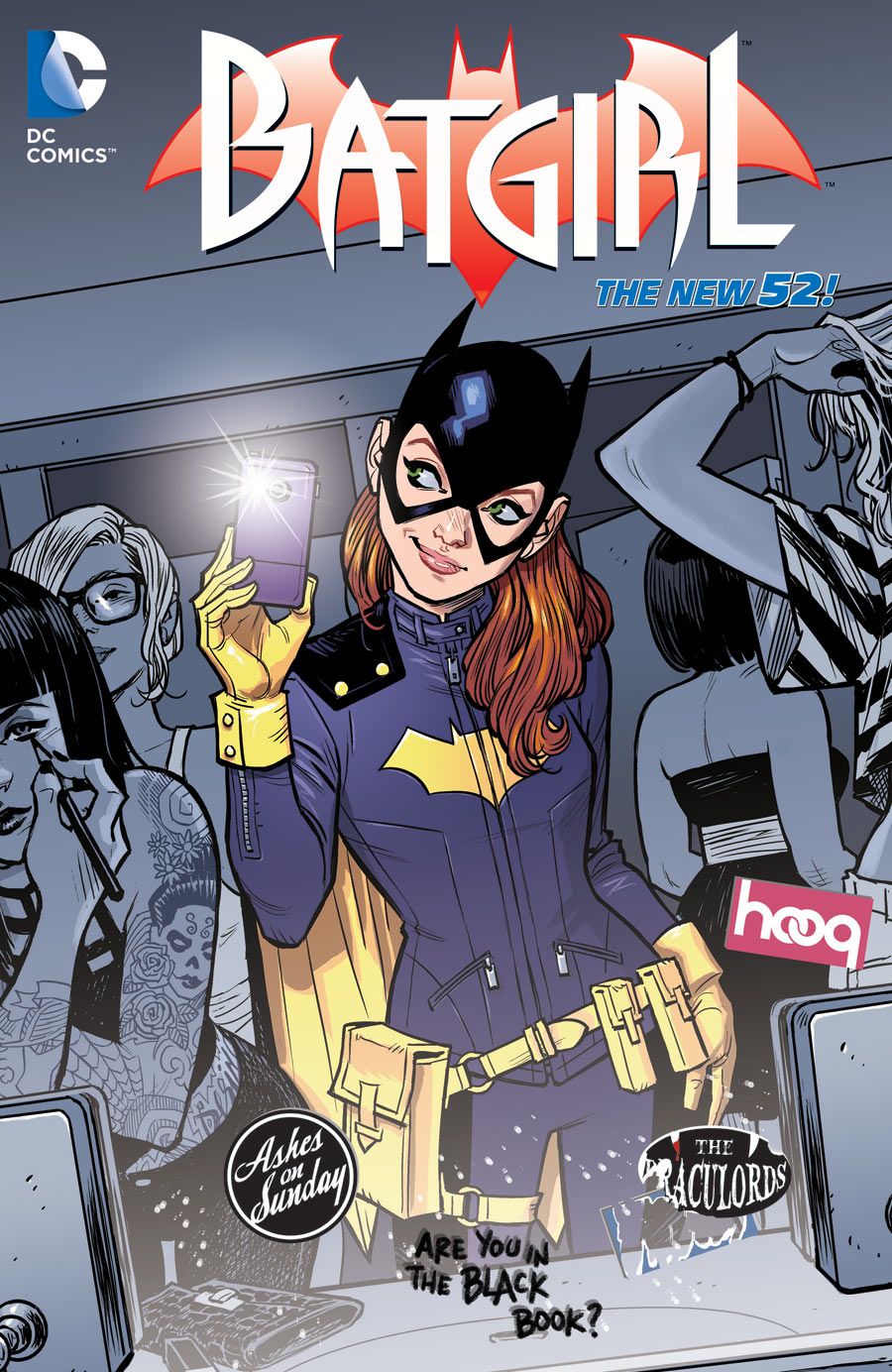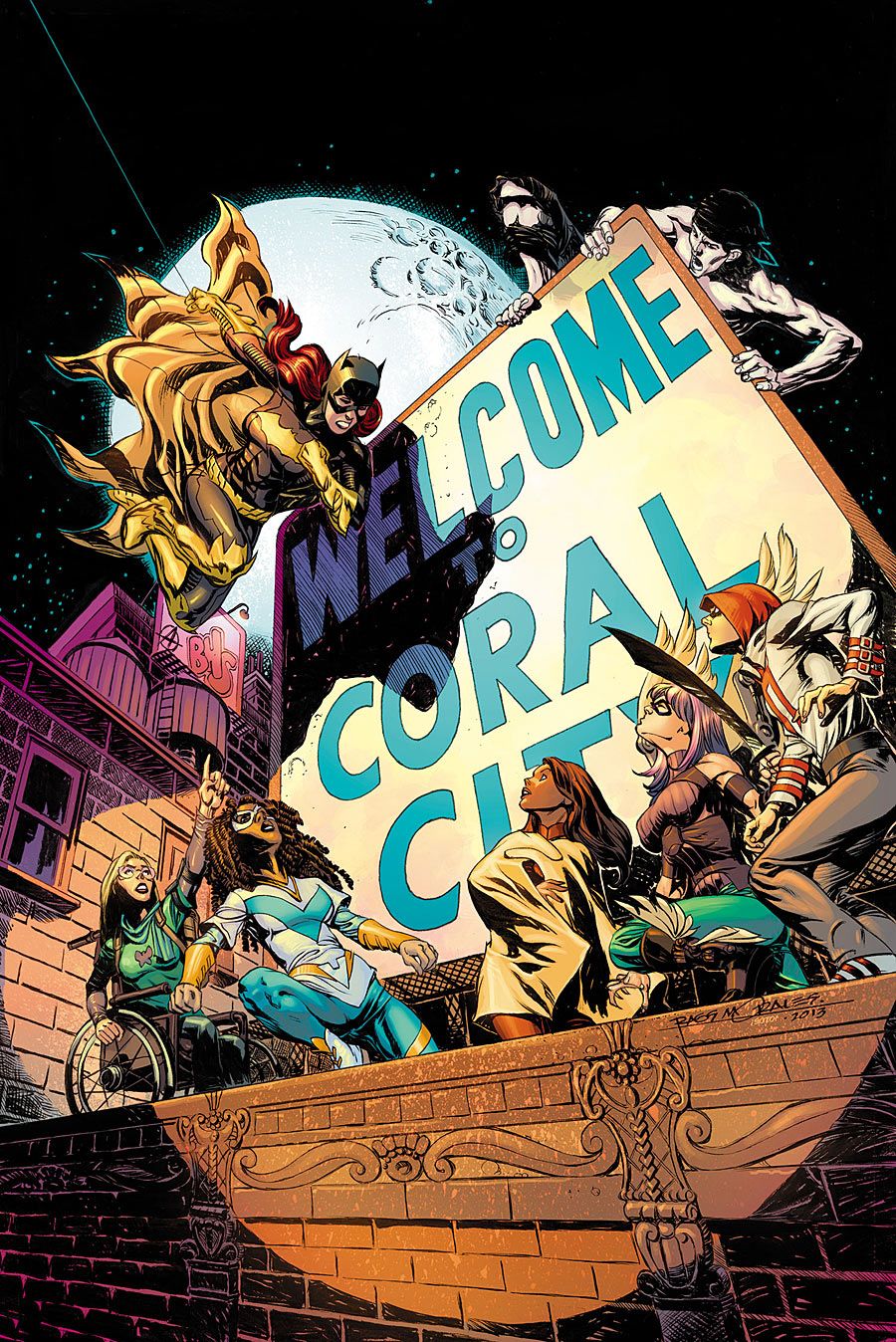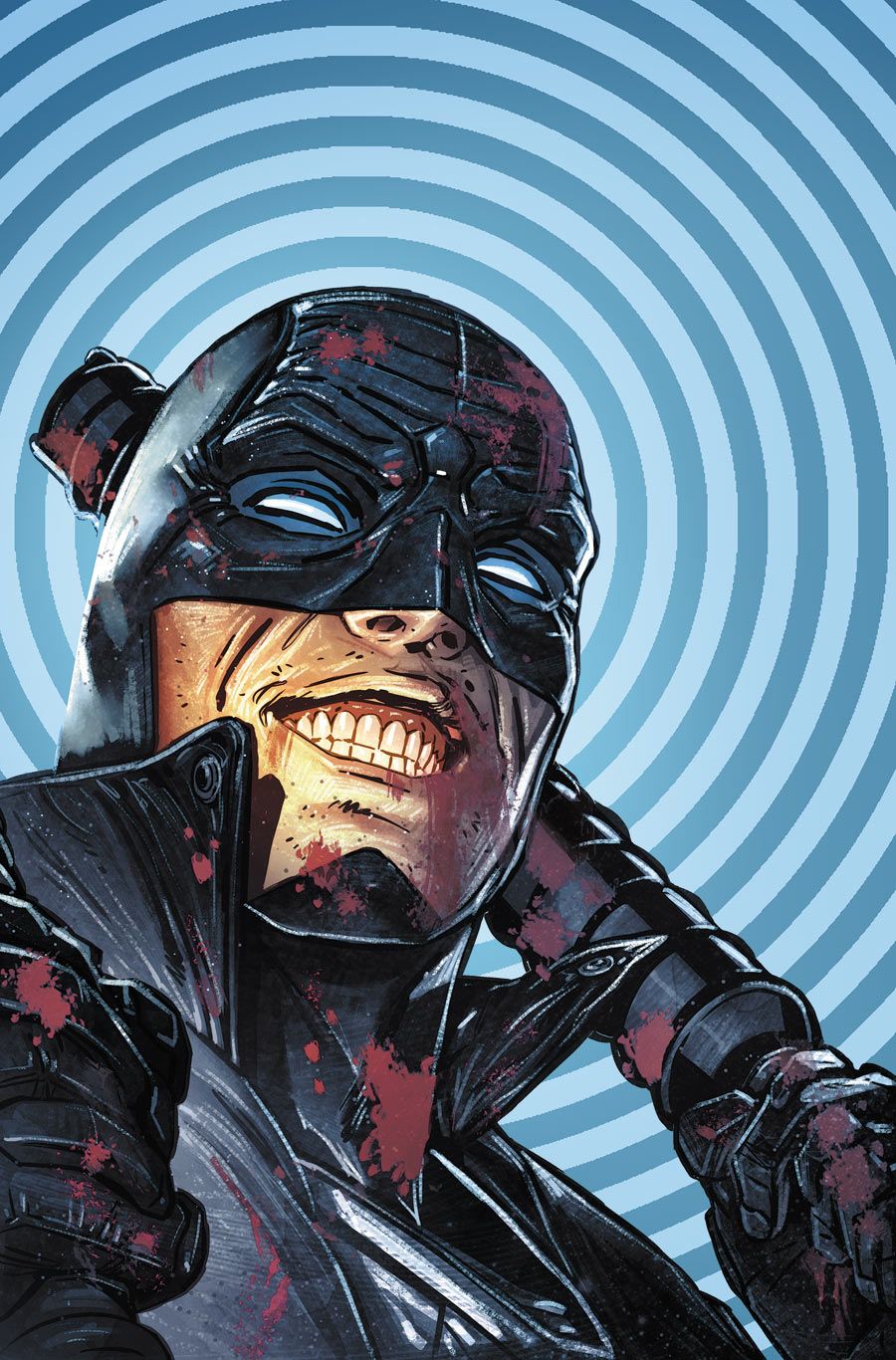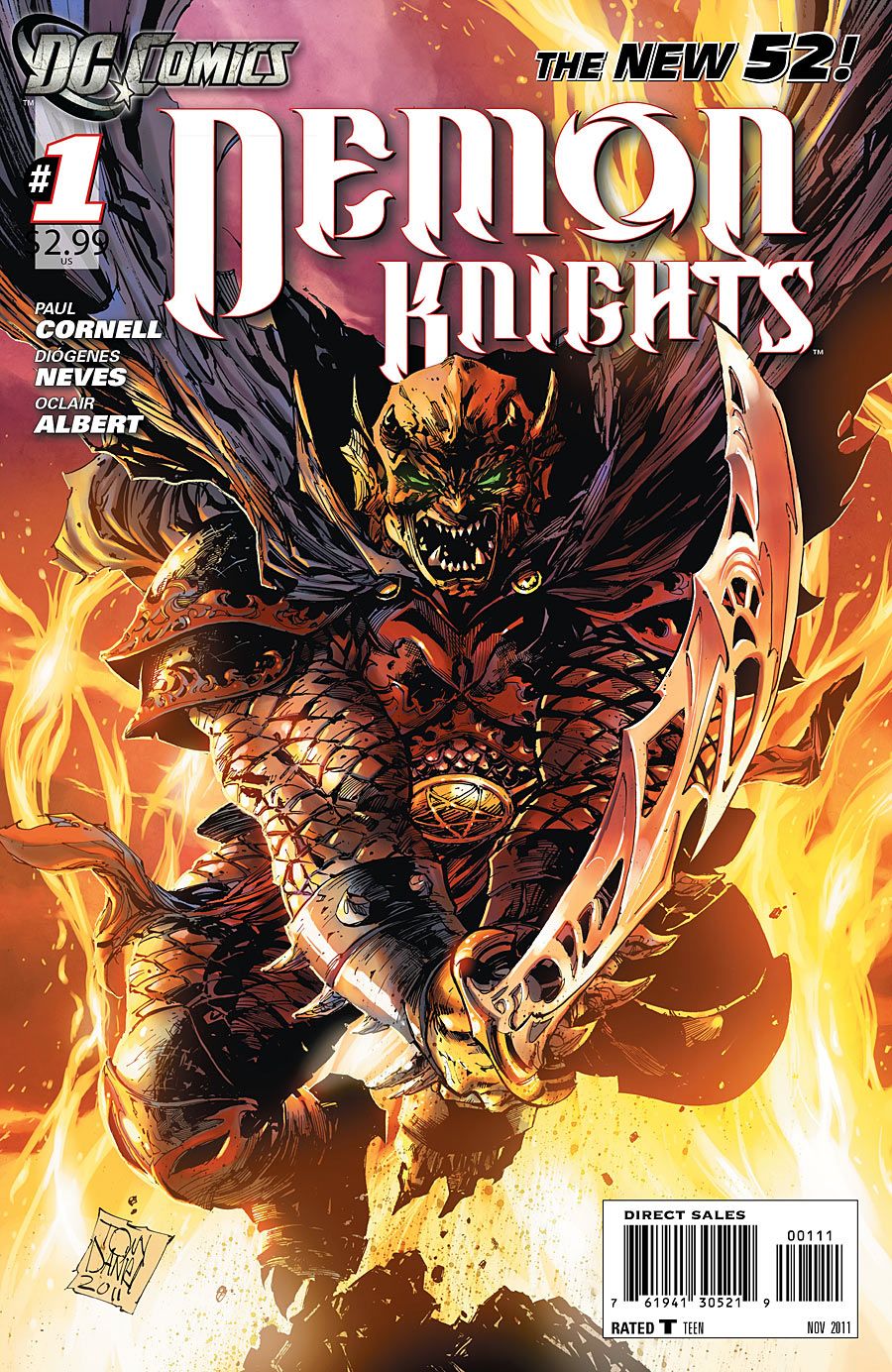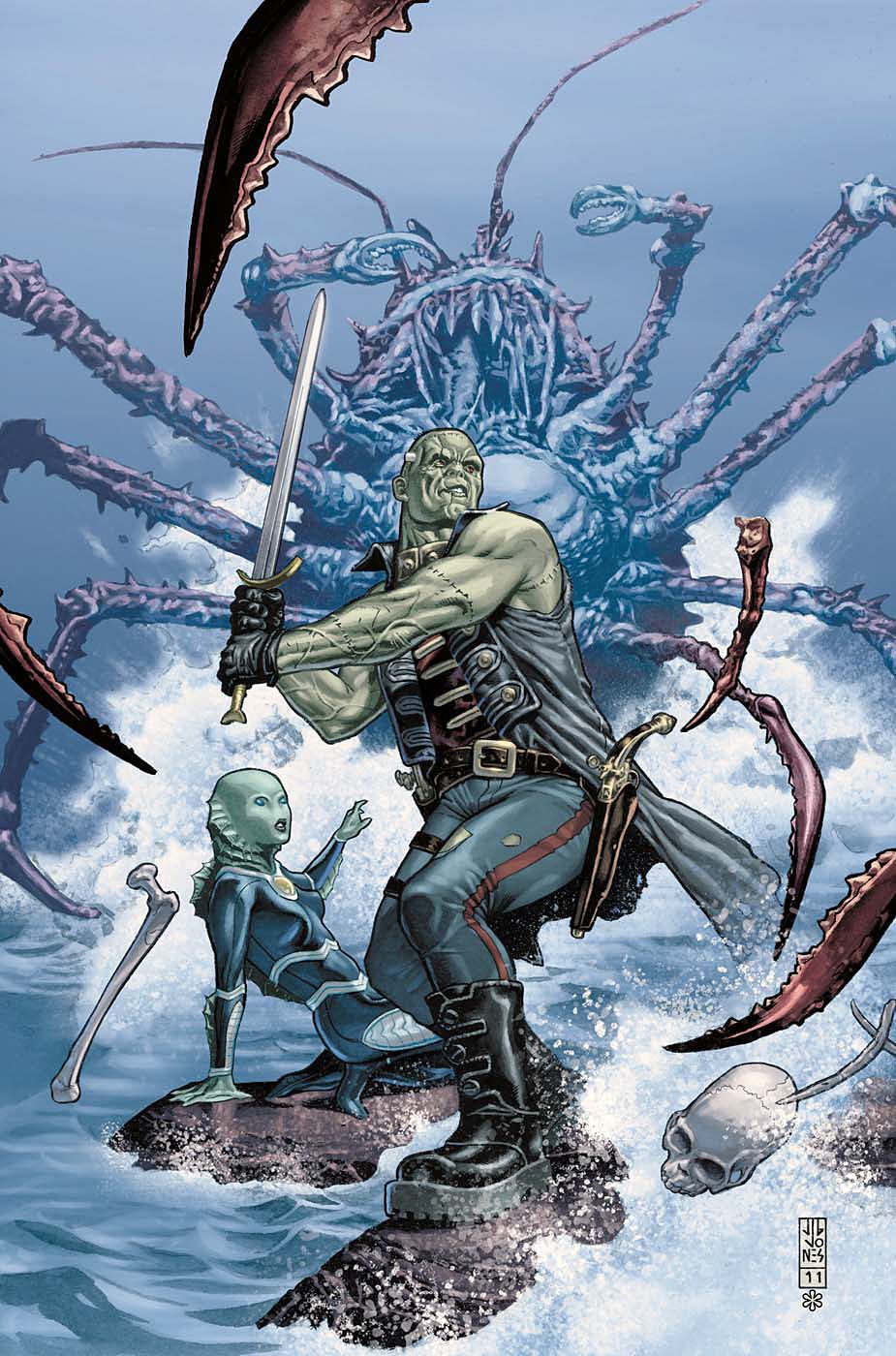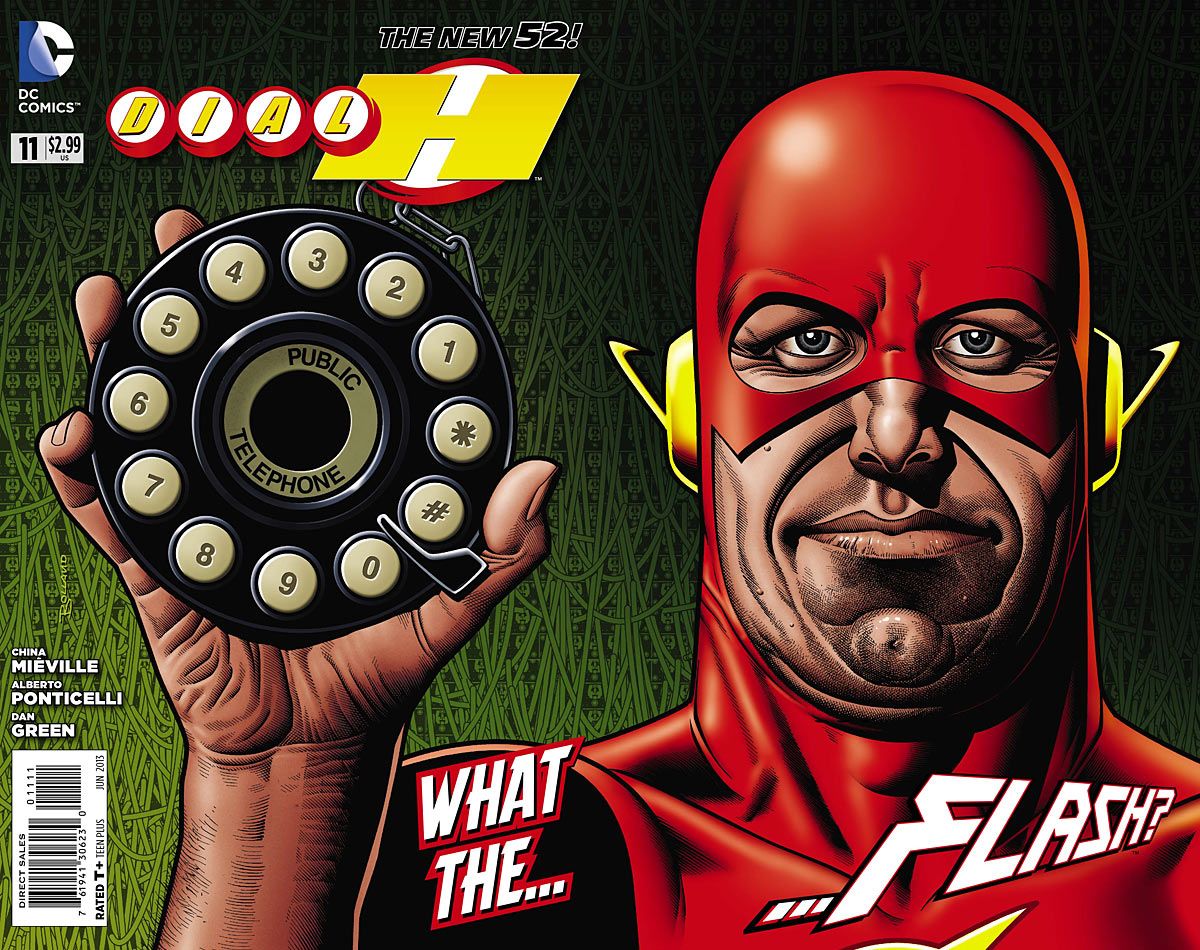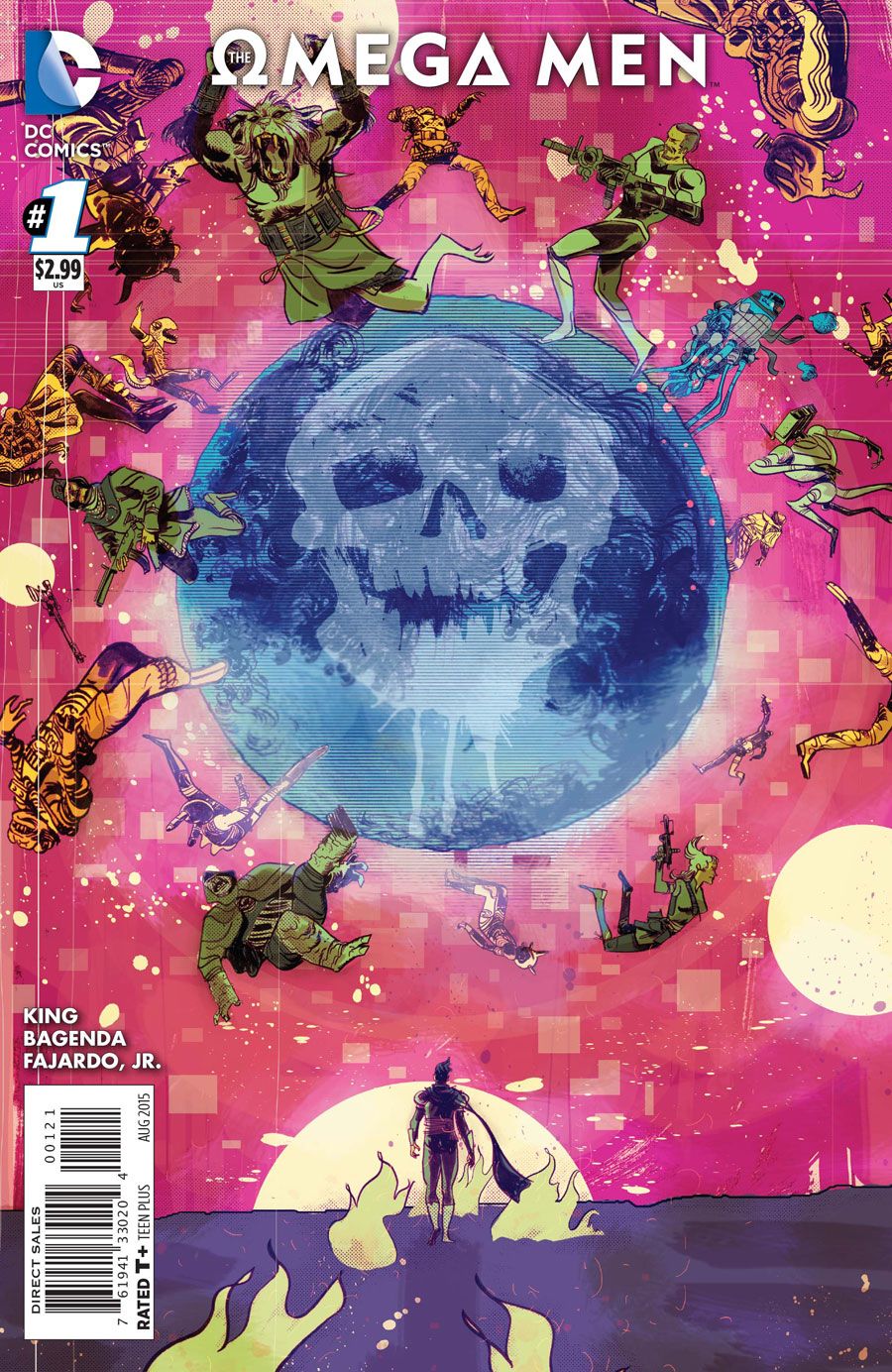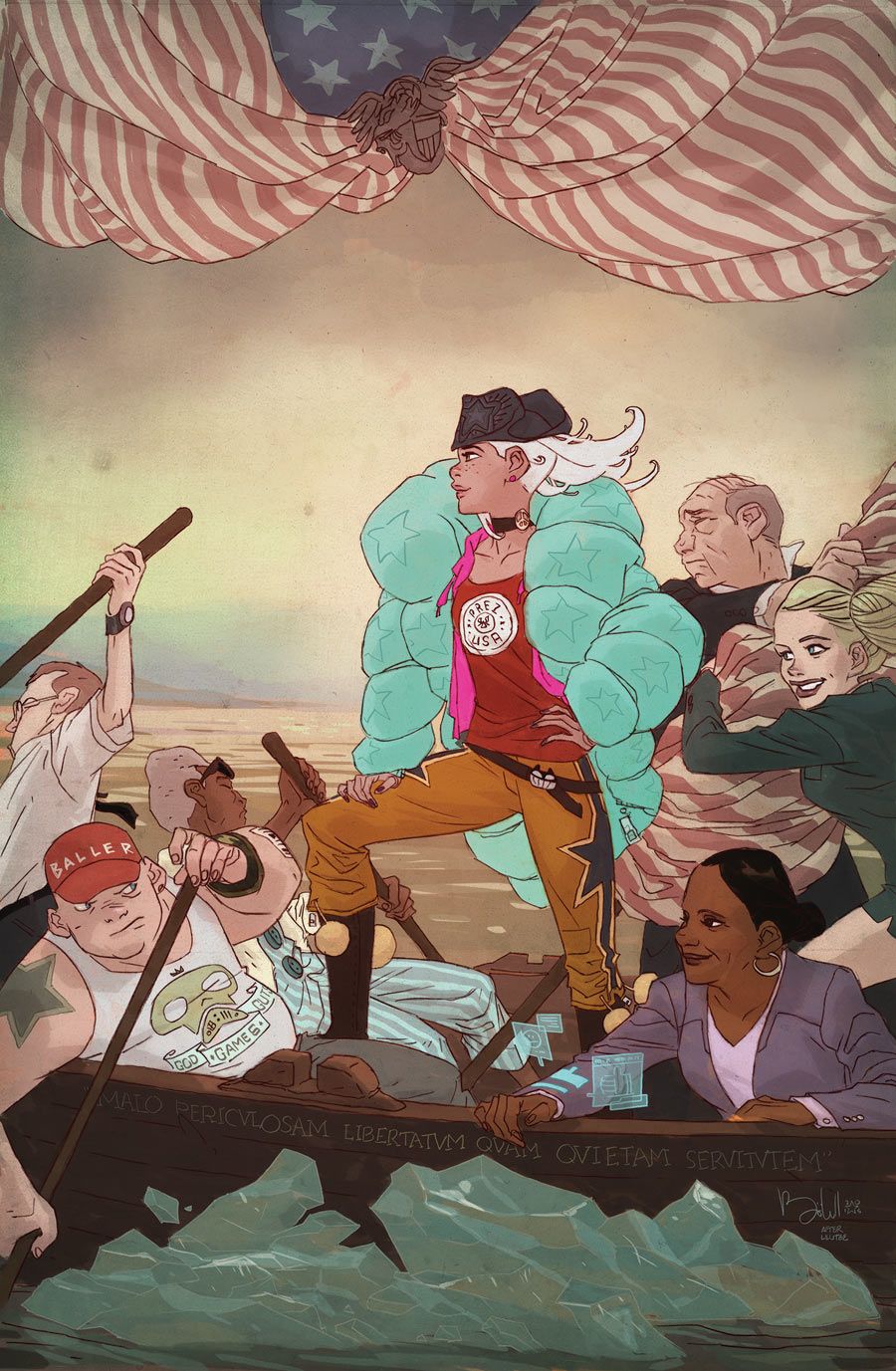The New 52 rebooted the DC Universe in September 2011 following the publisher's "Flashpoint" event. Designed to introduce a "more modern, diverse DC Universe," the initiative created a (mostly) new continuity and relaunched all of DC Comics' titles with new #1s.
RELATED: Why Would Doctor Manhattan Alter the DC Universe?
As the currently unfolding "Rebirth" relaunches push the New 52 era further down the memory hole, we hasten to point out several good-to-great elements which it helped bring to prominence.
I know what you're thinking: only 12? Well, we don't have all day.
12 HARLEY QUINN, SUPERSTAR
Introduced almost 25 years ago as the Joker's wacky sidekick on the Paul Dini/Bruce Timm "Batman: The Animated Series," and voiced impeccably by actress Arleen Sorkin, Harley hasn't exactly been a wallflower. She made the jump to comics in 1999 and gained her first ongoing series shortly thereafter. When the New 52 reintroduced her as part of "Suicide Squad," it was with a divisive makeover more like her "Arkham Asylum" video game look than the classic Timm design.
However, the creative team of Jimmy Palmiotti, Amanda Conner and Chad Hardin saw opportunity in the New 52 version, and for her current ongoing series turned Harley essentially into a creature of pure id. Harley's always been a volatile mix of wackiness and pathos, but Palmiotti, Conner and Hardin jolted the character into the stratosphere. A star-in-waiting thanks to the "Suicide Squad" movie marketing, there's already talk of a Harley-centric follow-up.
11 GRAYSON... DICK GRAYSON
Superhero comics' original kid sidekick has had many jobs, from acrobat to beat cop to museum curator. However, nothing compared to Dick Grayson's most recent gig as a super-spy. Writers Tom King and Tim Seeley and artist Mikel Janin soon won over skeptical readers with their respect for Dick's storied past and their willingness to throw him into Spyral's world of intrigue. The New 52's truncated timeline did away with many of Dick's old friends; but Seeley, King, Janin and company compensated with a great new supporting cast and some appropriately-exciting adventures. It all gave Dick a new level of maturity and -- perhaps most importantly -- a way to step further out of Batman's shadow. Regardless of how "Rebirth" treats Dick's espionage career, "Grayson" was a fascinating chapter for one of comics' oldest youngsters. Not bad for a character Dan DiDio wanted to kill off ten years ago.
10 NEW TALENT SHOWCASE
And speaking of Tom King, the ex-CIA officer has become one of DC's most valuable writers, going from "Grayson" and the cult-favorite "Omega Men" to perhaps the company's biggest assignment. He brings to "Batman" a reputation for sharp characterization and smart, suspenseful stories; and thanks to his exclusive contract, DC will have the benefit of his services for a while.
The New 52 also brought King's "Grayson" collaborator a wider audience. Besides drawing Agent 37's exploits, Mikel Janin was "Justice League Dark's" first artist, and worked on "The Final Days Of Superman" storyline. After drawing the "Batman: Rebirth" special, Janin will be sharing art duties with David Finch on the regular series.
King and Janin were just some of the writers and artists given new spotlights by New 52 titles. Others included "Flash's" Francis Manapul and Brian Buccellato, "Animal Man's" Jeff Lemire and Travel Foreman, "All Star Western's" Moritat, "Supergirl's" Mahmud Asrar, "I, Vampire's" Andrea Sorrentino, "Batman Incorporated's" Chris Burnham, "Doctor Fate's" Sonny Liew, "Omega Men's" Barnaby Bagenda and "Supergirl" and "Starfire's" Emanuela Lupacchino. While the New 52 was criticized for having a house style, they (and veterans like "Batwoman's" J.H. Williams III, "Wonder Woman's" Cliff Chiang and "Swamp Thing's" Yanick Paquette) showed that not all superhero books needed to look the same.
9 SCOTT SNYDER
As DC's Chief Creative Officer and the writer of "Flashpoint," "Justice League" and the "DC Universe: Rebirth" special, Geoff Johns guided the New 52 from start to finish. However, perhaps no single writer is as identified with its success as "Batman's" Scott Snyder. Besides helping to make "Batman" a sales and critical success alongside artist Greg Capullo, he oversaw two Bat-related weekly series ("Batman Eternal" and "Batman and Robin Eternal"); had a well-received run as "Swamp Thing's" writer; is heading up a writers' workshop for DC; and seems to have contributed generally to a creative renaissance in the Bat-books. After co-writing "Batman: Rebirth" with the aforementioned Tom King, he'll be teaming up with a murderers' row of artists for "All Star Batman." After that, who knows? He apparently hasn't maxed out yet.
8 "BATGIRL," "GOTHAM ACADEMY" and "BLACK CANARY"
A big part of that Bat-renaissance involves the tone set by "Batgirl's" 2014 makeover, wherein the team of Brenden Fletcher, Cameron Stewart and Babs Tarr relocated Barbara Gordon to the tony Gotham neighborhood of Burnside. After that, Fletcher, Becky Cloonan and Karl Kerschl created the Hogwarts-meets-Batman cast of "Gotham Academy," and Fletcher and artist Annie Wu relaunched "Black Canary" as the most dangerous band in America. Although "Rebirth" only has "Gotham Academy" maintaining its status quo -- while Babs travels the world and Black Canary teams up with Green Arrow and the Birds of Prey -- all three books made their mark not just in the Bat-line, but across DC's superhero roster generally. Last summer's "DC You" continued a trend "Batgirl" and "Gotham Academy" started. It wasn't an overall sales winner, but it did encourage diverse talents and approaches.
7 GAIL SIMONE
While Gail Simone is known for much more than her New 52 work, she was one of its consistent bright spots. She started the relaunch as co-writer of "Firestorm's" first six issues; and more significantly with the unenviable task of writing a post-Oracle Barbara Gordon. Her tenure on "Batgirl" was therefore informed by Babs' complex reactions to a new/old lifestyle, and for a while Simone navigated a minefield of conflicting emotions both for the character and her fans. After almost three years on "Batgirl," she moved on to quirkier fare. With artist Freddie Williams II, she created the socially-conscious "The Movement," which lasted twelve issues; and then with artists Dale Eaglesham and Tom Derenick she relaunched "Secret Six" (which ran for 14). All of these efforts reflect her distinct voice, her unique sense of humor, and her ear for precisely-honed dialogue. Currently she's writing the Vertigo series "Clean Room," but one hopes there is more superhero fare in her future.
6 MIDNIGHTER
The New 52's cosmic housecleaning reintegrated Vertigo characters into the main superhero line, and incorporated WildStorm characters into DC-Earth's history. While the Vertigo alums like John Constantine and Swamp Thing had fairly easy reunions, "Grifter," "Voodoo," "Team 7" and "Stormwatch" came and went without much fanfare. Then came "Midnighter," a witty, exciting series about an out-and-proud superhero who fit so well into the revised DC Universe that his rivalry with Dick Grayson didn't seem forced or unnatural. Writer Steve Orlando and artist ACO basically let Midnighter be Midnighter, giving equal attention to his costumed career and his personal life. "Midnighter" is important in terms of LGBT representation, but it's just a darned good comic regardless.
5 "DEMON KNIGHTS"
Whereas most of the New 52 titles concerned present-day superheroes, "Demon Knights" was an outlier. Teaming Madame Xanadu, Etrigan the Demon, Vandal Savage and the Shining Knight with new characters Exoristos, al Jabr and the Horsewoman, writer Paul Cornell and artist Diogenes Neves merged a medieval setting with a wandering-gunslinger attitude and filtered it through a nice range of character relationships. Again, the New 52's rebooting capacity allowed "Demon Knights" to play with its cast's history as needed, especially since the team was intended to be a forerunner of Stormwatch. Cornell and Neves were succeeded fairly seamlessly by Robert Venditti and Bernard Chang, but "Demon Knights" only lasted a total of two years. Regardless, it was an entertaining departure both for a superhero book and a period piece, and it's the kind of thing one hopes DC will do more often.
4 "FRANKENSTEIN, AGENT OF S.H.A.D.E."
Like the Shining Knight from "Demon Knights," "Frankenstein" made the jump from Grant Morrison's "Seven Soldiers" to the New 52, with a "Flashpoint" tie-in miniseries in between. The New 52 version picked up largely where Morrison left off, casting the monster as the top operative for a super-secret spy organization charged with dispatching evil in wildly over-the-top ways. Written by Jeff Lemire and drawn by Alberto Ponticelli and Walden Wong, "Frankenstein's" 17 issues were filled gleefully with the kind of carnage only a heavily-armed, cobbled-together creature could produce.
3 "DIAL H"
Speaking of reanimated creations, every DC era has its share of obscure features given a fresh, modern spin; and the New 52 was no exception. However, in the hands of writer China Mieville, artist Alberto Ponticelli (him again!) and uber-editor Karen Berger, "Dial H" transcended its Silver Age origins. That simple setup -- a magic talisman which could transform its bearer into a series of randomly-powered superheroes -- was the springboard for a paranoid meditation on the nature of superpowers and the underpinnings of superhero comics themselves. Naturally, while it tied into the main superhero line (even crossing over with "The Flash"), for the most part it focused on its own storylines. Ironically, those stories covered as much existential ground as the most cosmic of New 52 super-epics.
2 "THE OMEGA MEN"
In a way, the 2015-16 "Omega Men" revival did the opposite, by taking the epic story of an interplanetary civil war and personalizing it through the actions of the titular characters. To this end, "Omega Men" used ex-Green Lantern Kyle Rayner as the audience-identification character and guide to the various political realities and shifting allegiances. Readers needed it, because writer Tom King and artist Barnaby Bagenda kept them off-balance from the start. "Omega Men" sold poorly enough that it needed loud fan support just to get to twelve issues; but those issues will be remembered fondly.
1 PREZ
Like "Omega Men," "Prez" was another low-selling DC You title; and like "Omega Men," "Prez was conceived as (at least) a twelve-issue series. Although DC has promised to bring it back in the fall, so far the "Prez" team of writer Mark Russell and artist Ben Caldwell have had only six issues published. This leaves the satirical tale in limbo, as what readers there are wait to see whether America's first teenaged president will defeat the entrenched forces who were hoping for a more pliable leader of the free world. Russell promised the book would return this October, and maybe "Prez's" Reuben Award for Best Comic Book from the National Cartoonists Society will make it easier for DC to greenlight a satisfying ending.
CBR Senior Editor Stephen Gerding also contributed to this story.

